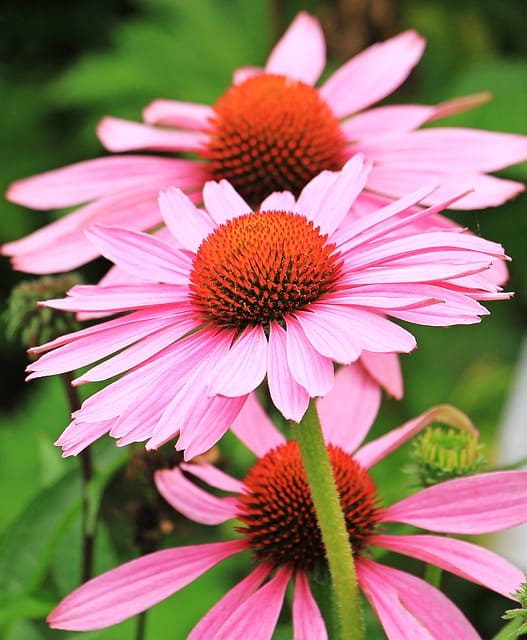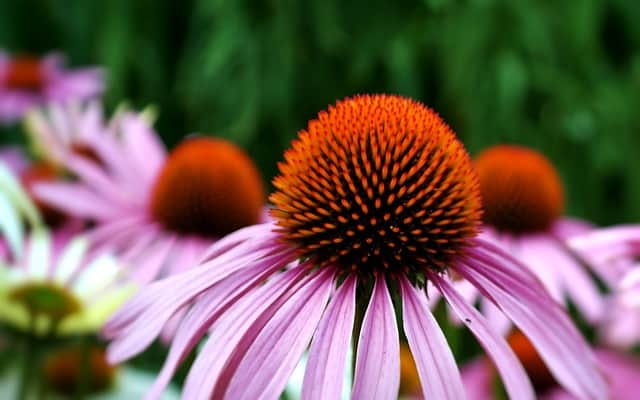Whether you’re a seasoned herbalist or just starting, this guide will provide you with everything you need to know about harvesting echinacea and making your own tea.
Understanding Echinacea

Echinacea is a genus of flowering plants whose roots and leaves are rich in compounds that may help bolster your immune system. Traditionally used by Native Americans for its medicinal properties, echinacea has gained popularity in herbal medicine due to its potential to prevent and treat colds, flu, and other infections.
The most commonly used species for tea preparation are Echinacea purpurea, Echinacea angustifolia, and Echinacea pallida. Each of these varieties has unique characteristics, but all share the beneficial properties that make them perfect for tea.
When to Harvest Echinacea
The timing of your harvest is crucial to ensure that you’re getting the most potent parts of the plant. The best time to harvest echinacea is:
Leaves: Harvest in late spring to early summer when the plant is actively growing, typically before flowering. Young leaves are tender and flavorful.
Flowers: Pick the petals when they are fully open but before they begin to wilt. This is usually mid to late summer. Flowers not only add color but also enhance the tea’s flavor.
Roots: If you plan to harvest the roots, wait until the fall, ideally after the first frost. This is when the roots have accumulated the most beneficial compounds.
How to Harvest Echinacea
When harvesting echinacea, be gentle to avoid damaging the plant. Here’s a step-by-step guide:
Gather Tools: You’ll need garden shears or scissors, gloves, and a basket or container for collecting your harvest.
Choose Healthy Plants: Select plants that are vibrant, without signs of disease or pest damage. Look for those with plenty of leaves and flowers.
Harvest Leaves and Flowers: Cut the leaves and flowers close to the stem, taking care to leave some behind to ensure the plant continues to thrive.
Dig for Roots: When harvesting roots, use a spade or garden fork to gently loosen the soil around the plant. Carefully pull the plant up, shaking off excess dirt. Trim away any dead or damaged roots.
Clean Your Harvest: Rinse the flowers, leaves, and roots in cool water to remove any soil or insects. Pat them dry gently with a towel.
Preparing Echinacea Tea
Now that you have your harvest, it’s time to turn it into tea. Here’s a simple recipe:
Ingredients:
Fresh echinacea leaves and flowers (or dried if you prefer)
Echinacea roots (optional), washed and chopped
Water
Instructions:
Boil Water: Bring about 4 cups of water to a boil in a kettle or pot.
Steep: Add 1-2 tablespoons of fresh echinacea leaves and flowers to the boiling water. If using roots, add them as well. Lower the heat and let the mixture simmer for 10-15 minutes.
Strain: Use a fine mesh strainer or cheesecloth to strain the tea into cups or a teapot.
Enjoy: Sweeten with honey or agave syrup if desired, and enjoy your healthful cup of echinacea tea!
Storage and Preservation
If you have more echinacea than you can use immediately, consider drying the leaves, flowers, and roots for later use.
Drying: Bundle the leaves and flowers and hang them upside down in a cool, dark place with good air circulation. For roots, slice them into thin rounds and lay them flat on a screen or dehydrator tray.
Storage: Once fully dried, store your echinacea in airtight jars away from light. Properly dried echinacea can last for up to a year.
Conclusion
Harvesting echinacea for tea offers not only health benefits but also a rewarding connection to the natural world. By following these tips, you can enjoy the refreshing and rejuvenating properties of echinacea tea right from your garden. Remember to cultivate your plants responsibly and respect nature’s rhythms while enjoying the fruits of your labor. Cheers to your health and well-being!





